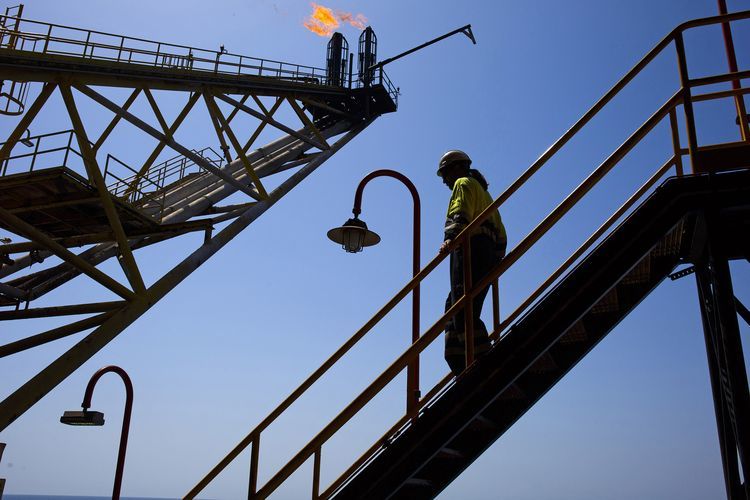
Oil halted its drop near a two-month low before data forecast to show U.S. inventories fell for an eighth week.
Futures were little changed in New York after dropping 1.4 percent on Monday. U.S. stockpiles lost 3.25 million barrels last week, according to a survey before government data due Wednesday. Iran plans to double crude exports as long as the increase is absorbed by global markets, while Libya’s state crude producer is seeking to reopen oil ports and restore output.
Oil has retreated from more than $51 a barrel last month as a rally spurred by supply disruptions in Nigeria and Canada and falling U.S. output loses momentum. Prices remain up about 70 percent from a 12-year low in February, a recovery that has prompted American producers to return drill rigs to service.
“Recent inventory declines we see in the U.S. could work as a bullish factor, which limits the downward pressure on oil prices,” said Will Yun, a Seoul-based commodities analyst at Hyundai Futures Corp.
West Texas Intermediate crude for August delivery was at $44.75 a barrel, down 1 cent, on the New York Mercantile Exchange at 12:21 p.m. Singapore time. The grade fell 65 cents to settle at $44.76 on Monday, the lowest close since May 10. Total volume traded was about 39 percent below the 100-day average.
U.S. Inventories
Brent for September settlement gained 5 cents to $46.30 a barrel on the London-based ICE Futures Europe exchange. The global benchmark oil traded at a 78-cent premium to WTI for September delivery.
U.S. inventories are forecast to drop for an eighth week, according to a Bloomberg survey. That would be the longest run of declines since 2015. Stockpiles slipped by 2.2 million barrels to 524.4 million barrels in the week to July 1, according to Energy Information Administration data.
Iran is exporting about 2 million barrels of its daily output of 3.8 million, said Mohsen Ghamsari, NIOC’s director of international affairs. It has regained about 80 percent of the market share it held before the U.S. and European Union tightened sanctions on its oil industry in 2012, he said.
Libya’s four ports accounting for about 860,000 barrels a day in crude exporting capacity have been shut due to political turmoil and fighting. The nation now produces a fraction of the 1.6 million barrels a day it pumped before the toppling of ruler Moammar Al Qaddafi in 2011. A July 2 deal uniting the National Oil Corp.’s rival administrations enables the company to focus on reviving Libya’s crippled oil industry, Chairman Sanalla Ibrahim said.
Oil-market news:
Petroleo Brasileiro SA expects to meet production targets, after years of missing them, with the help of two new floating platforms that are coming online in the next few months, exploration and production head Solange Guedes said. BP Plc faces more than $20 million in penalties and surrendered profits after a U.S. regulator found that the energy giant manipulated commodity markets in Texas.
Recommended for you
